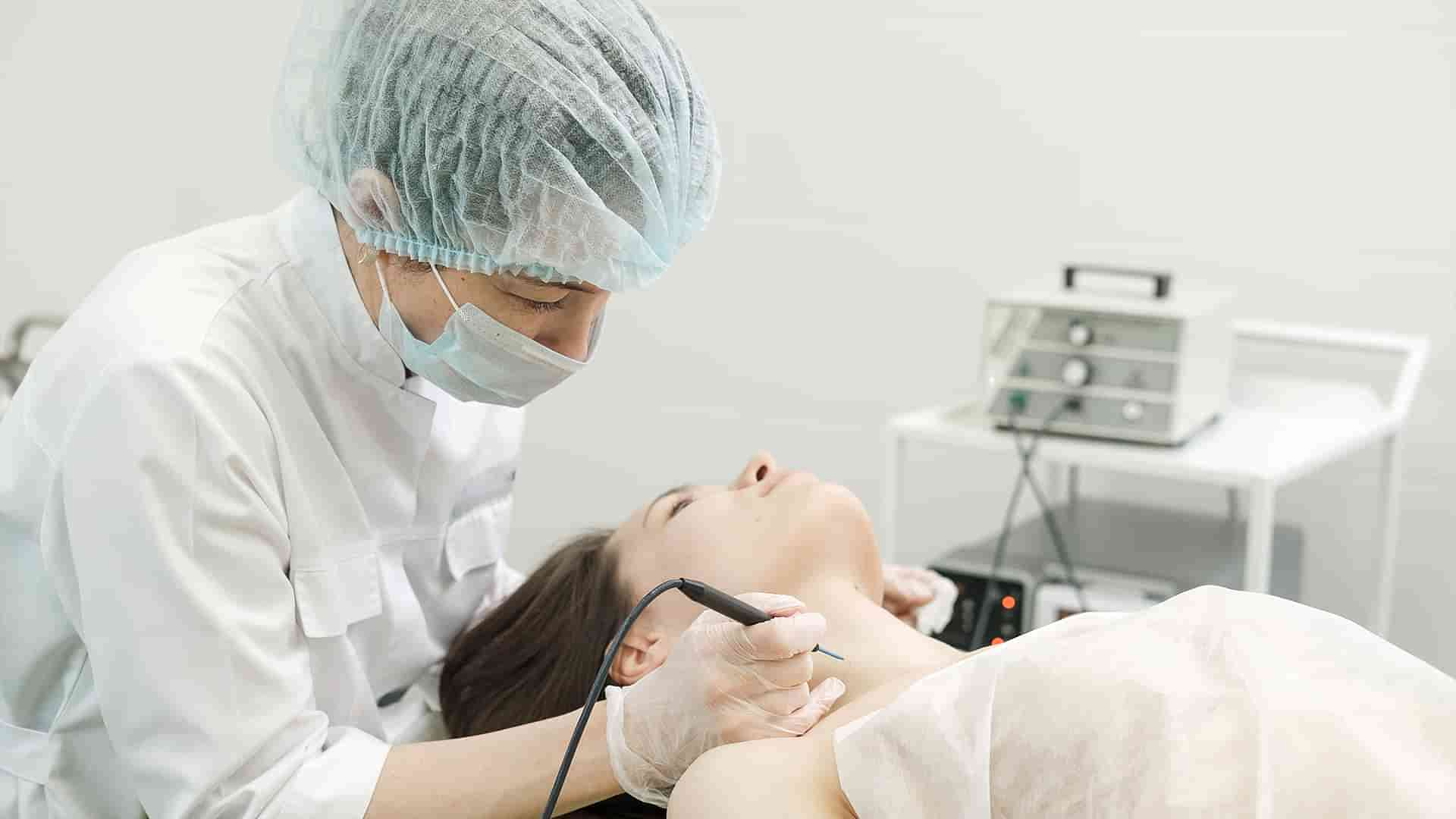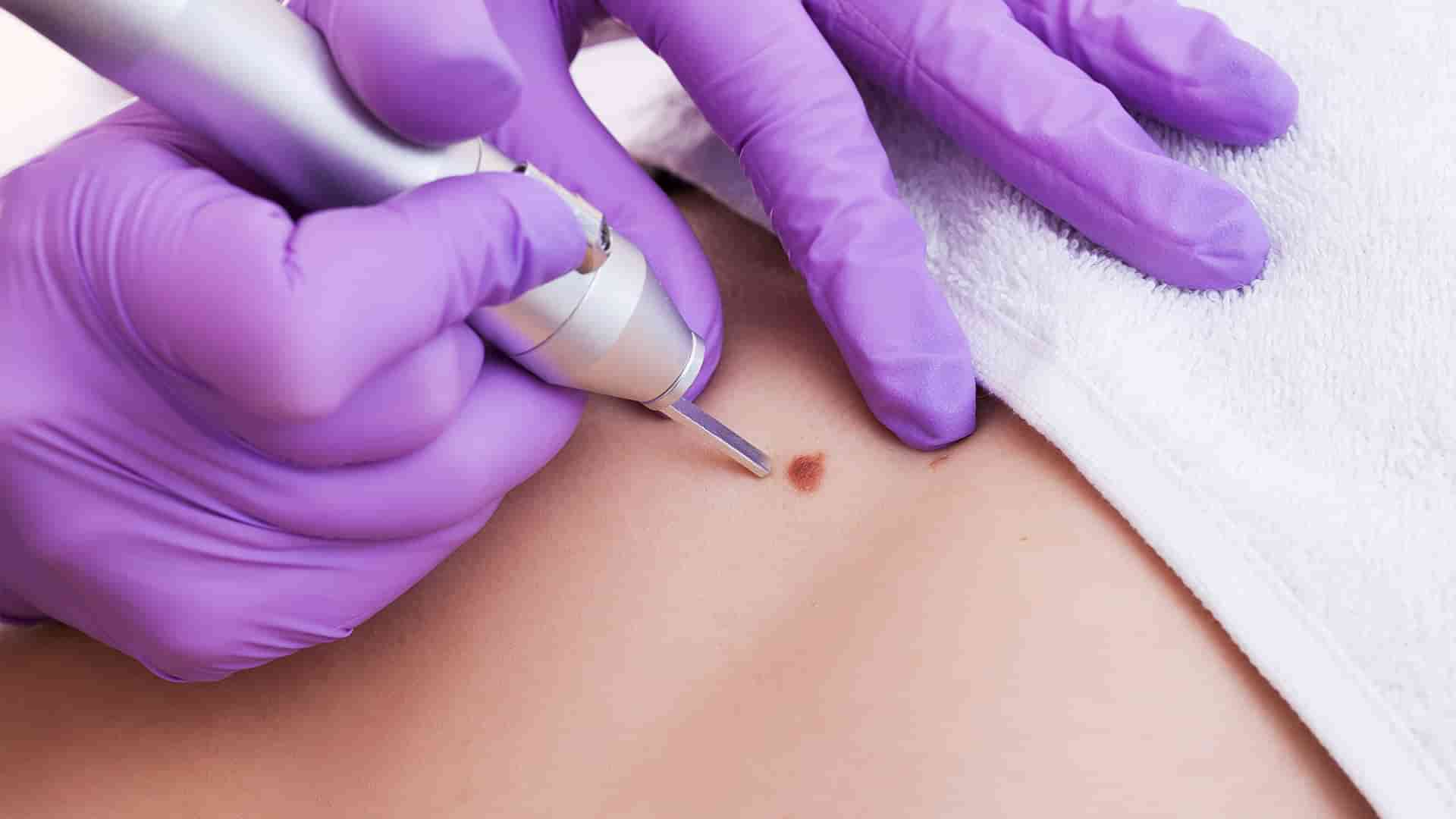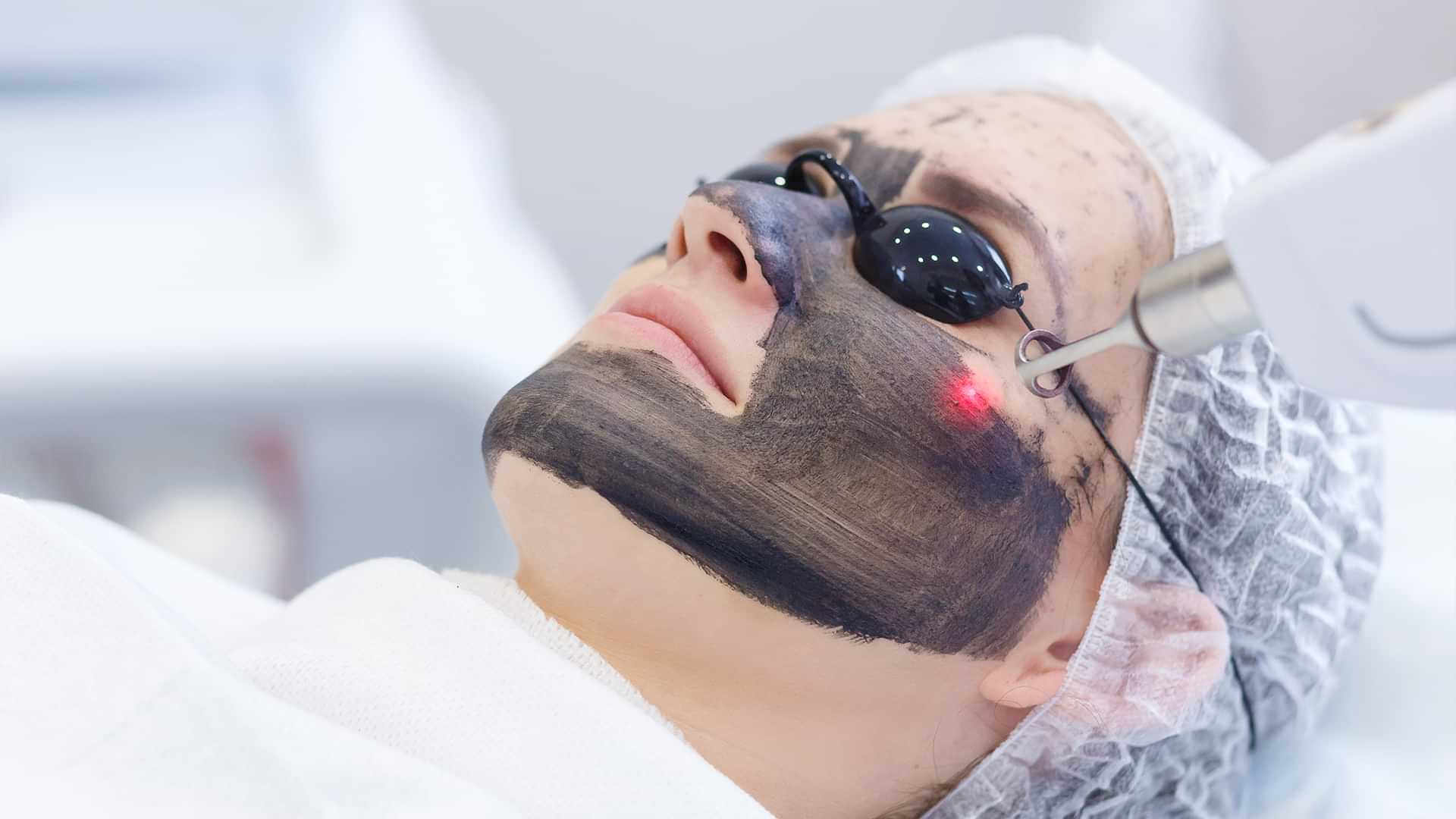Radio Cautery

Radio Cautery
For the removal of warts and skin tags, RF or Radiofrequency (also known as Radio Surgery or Radiowave Surgery) is a popular therapy. It entails the transmission of radio waves through the skin in order to remove or reshape a lesion. To cauterize warts, radiofrequency employs low-temperature, high-frequency energy radio waves.
Without the use of pressure, RF therapy can cut and coagulate at the same time. Because it is simple to carry out, this treatment has gained popularity. Downtime and bleeding are also minor. Radiofrequency has almost no side effects or problems.
How does RF work?
The concept behind RF is that tissue acts as a barrier against high-frequency radio waves supplied at low temperatures.
When a high-frequency pulse travels through the tissue, it creates heat by resisting its passage. By raising the intracellular water temperature over the boiling point, this heat raises the inner pressure within the tissue mass. The cutting effect is caused by the increased pressure, which causes cell walls to shatter.
The heat spreads like the water in the intracellular tissue vaporize, coagulating tissue proteins and causing hemostasis, or blood flow stoppage, without needing to burn the tissue as is usually necessary during such operations.
Depending on the type of lesion, different electrodes are utilized, such as tiny needles, wire loops, and scalpel blades, among others.
What you may anticipate
Mild discomfort may be felt during the procedure, however, this will subside when an anesthetic cream is used. A local anesthetic may be administered using a tiny needle in some circumstances.
Swelling, bruising, and redness in the region where the treatment was performed are common side effects of RF wart removal. Tenderness will persist for a few days until the region heals. Tissue coagulation, on the other hand, makes it unlikely that any bleeding will occur during or after the procedure. It also takes less time to heal.
Following-up care
Despite the fact that pain and suffering should be minor, some people may require pain treatment. Before taking any pain relievers, see your dermatologist.
As much as possible, avoid touching the region.
For at least x days, avoid direct sunlight and keep away from dusty or sandy areas.
Because there will be a scab that will ultimately fall off, it's best to keep the area dry for the first few of days following surgery.






